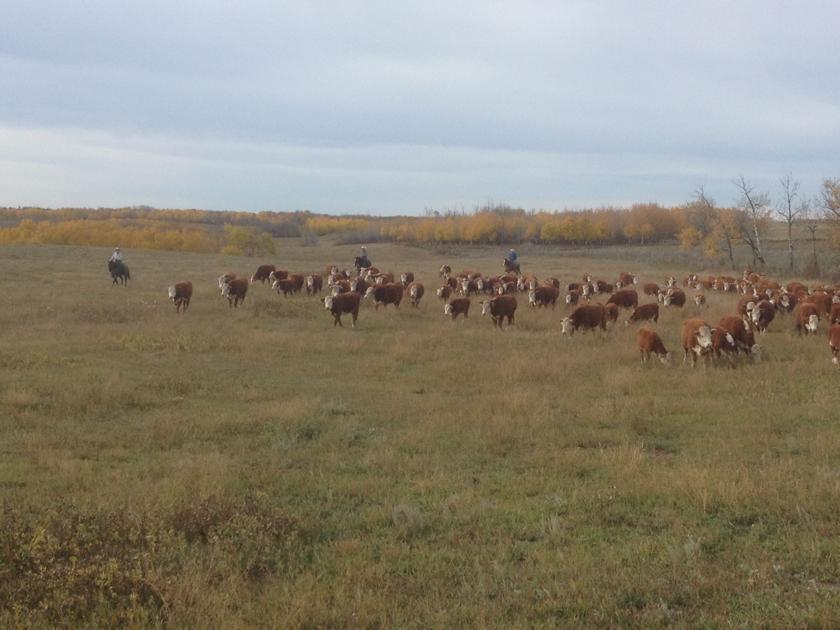
Editor’s note: This is the second installment of a two-part series on cattle handling. The first installment ran on Sept. 11.
Al Fenton raises purebred Herefords in Alberta and all of his cattle are easy to manage and easy to sort, even out in big pastures with no corrals. He and his cowboys do all the sorting quietly on horseback, holding the herd and sorting out the ones they want. He says the secret is to pick a calm, dependable one on the first sort.
“I always choose a cow or heifer that I think will stay calm and take her about 200 yards away and stop her. I let her sit there and a rider stays there and holds her. The next one we bring out, we take to that first one,” he said.
Once you have several in that little group they are easy to hold as you bring more out of the herd to put with them.
With 600 cows, he sorts them into groups of 30.
“Once we get to 30 and feel comfortable with the group that will be going to a certain pasture, we take that group and move them to a spot where we can place them and hold them, and start sorting again. This way we don’t have the turmoil and stress of sorting in a tighter area like a corral.”
This is much quieter and calmer and easier on the cattle and the people sorting them.
“We work them this way as pairs, then as heifer calves, then yearling heifers and then bred heifers. We keep the same concept of handling as they grow up, and they sort quietly and easily—and this avoids shrink on the cattle when sorting. It takes fewer riders as the heifers get older; it becomes easier and easier.”
Training cattle is like training a horse. If you handle them correctly from the time they are young, and are patient with them as they learn, they are comfortable with what you do and they stay calm and trust you. They know what you want them to do and are willing to do it.
Sorting cattle doesn’t require fancy facilities; it just takes some planning and forethought on how to handle cattle with what you have. Producers can do a lot with very little facility if cattle are trained to be manageable. “Just train your cattle and position your gates so you can always win,” Fenton said.
If you understand cattle, you just sort toward their tendencies so their direction of movement seems like their idea.
“When it’s their idea, you will win every time,” said Fenton.
If cattle are calm and know where they are going and what they are doing, it works nicely. You give them
an easy way out and they take it—without being stressed. It’s like training a horse; make the right thing easy and the wrong thing harder.
“The yelling and screaming that happens in a lot of corrals puts stress on the cattle, the work crew, and families. That stress will all go away, if you put enough thought into how you will sort those cattle. If you do some cattle management and training ahead of time, most of that noise and stress goes away,” said Fenton.
“One thing that a lot of people don’t understand is that if you are making noise you are distracting the cattle’s focus on what they should be thinking--about where they are going--and directing it to you instead. You don’t want them looking at you; you want them looking at the out gate. The more that you can let them think for themselves, and have the flow the right direction, the more you will win—with a lot less stress on everybody,” he said.
September 25, 2020 at 02:00PM
https://www.postregister.com/farmandranch/columnists/barnyard_basics/barnyard-basics-training-cattle-for-easy-sorting/article_ee573f64-07dc-5718-b10e-41d55b5470b6.html
Barnyard Basics: Training cattle for easy sorting - Post Register
https://news.google.com/search?q=easy&hl=en-US&gl=US&ceid=US:en
No comments:
Post a Comment